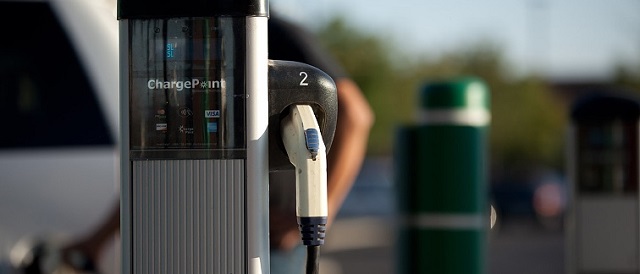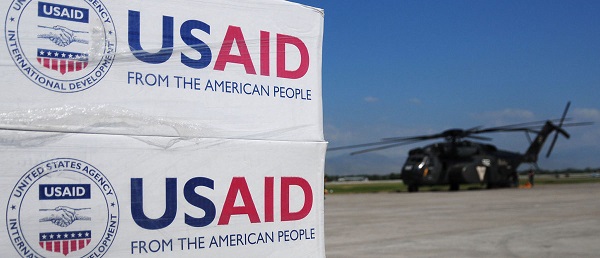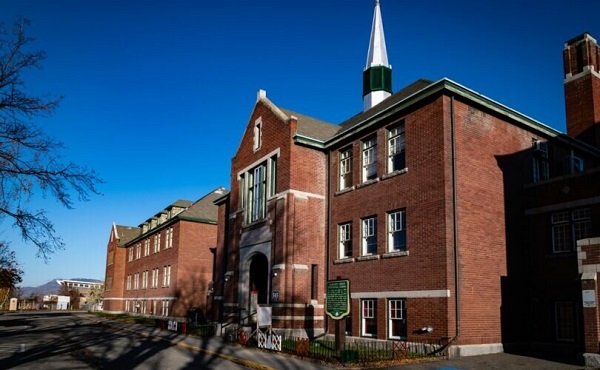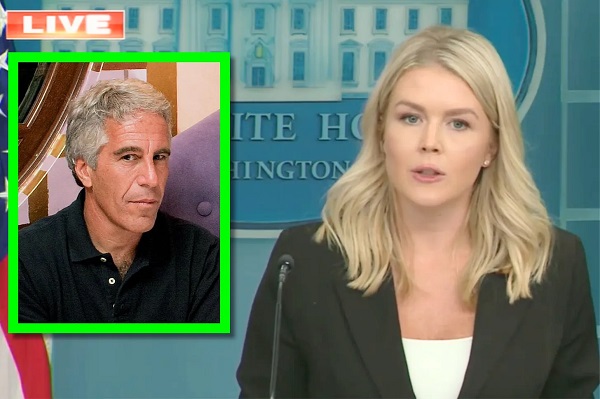International
Chinese-Owned EV Company Showered Dems With Campaign Contributions

 From the Daily Caller News Foundation
From the Daily Caller News Foundation
By NICK POPE
The U.S. subsidiary of a Chinese electric vehicle (EV) manufacturer and its top executive have given hundreds of thousands of dollars in campaign cash to Democrats in recent years.
Stella Li, a top executive for BYD Americas, and the company itself have given tens of thousands of dollars in campaign cash to Democratic candidates and organizations in California and beyond over the past decade, according to a Daily Caller News Foundation review of federal and state political spending records. Based in China, BYD is the biggest EV producer in the world, and Congress moved in January to ban the Pentagon from buying its batteries due to security risks, according to Bloomberg News.
For example, BYD and Li gave more than $40,000 to the Democratic National Committee (DNC) between 2020 and 2023, according to the DCNF’s review of political spending records. The company and Li have also poured more than $30,000 into organizations boosting President Joe Biden’s 2024 reelection effort to date.
Newsom test drives an EV hybrid made by a Chinese company he once gave a no-bid contract to https://t.co/97IdXPNkWs
— Daily Caller (@DailyCaller) October 25, 2023
Democratic California Gov. Gavin Newsom received about $60,000 from Li and BYD USA between 2018 and 2023. Newsom drew scrutiny for his administration’s decision to give BYD a $1 billion no-bid contract to supply protective equipment during the coronavirus pandemic despite the company’s core competency being in a different business, and Newsom subsequently took a BYD vehicle for a publicized test drive during a 2023 trip to mainland China.
Former Los Angeles Mayor Antonio Villaraigosa received more than $10,000 from Li to help his failed 2018 gubernatorial campaign, while the California Democratic Party received approximately $19,000 from Li and BYD USA between 2018 and 2020, according to the DCNF’s review of political spending records.
Michael Anotovich, former Chair of the Los Angeles County Board of Supervisors and an architect of California’s bullet train project, received more than $11,000 from BYD USA and its executives in 2015 and 2016 to help his political career, according to the DCNF’s review of political spending records. Anotovich often governed in ways that benefited BYD, such as when he, along with Villaraigosa, steered millions of dollars from a Los Angeles municipal clean bus testing program toward BYD, the Los Angeles Times reported in 2018.
Additionally, BYD USA forked over $25,000 to a 501(c)(4) organization called California For Safe, Reliable Infrastructure in 2018, according to the DCNF’s review of state records. Californians For Safe, Reliable Infrastructure was an organization that opposed the failed Proposition 6 in 2018, which would have repealed a 12 cent per-gallon tax on gasoline passed the prior year and required voter approval for future tax or fee increases on gasoline.
Ed Chau — formerly a member of the California State Assembly — raked in $7,000 from BYD USA and executives to boost his ambitions in 2018 and 2020, according to the DCNF’s political spending records review. Notably, Chau nominated Li for a “woman of the year” prize in his district in 2018.
Buttigieg says you don’t have to worry about gas prices if you buy an electric vehicle…someone should remind him how out of touch he sounds pic.twitter.com/tiJVkl7wB3
— Daily Caller (@DailyCaller) March 7, 2022
Meanwhile, BYD USA and Li gave Los Angeles City Councilman Kevin de Leon more than $19,000 in 2017 and 2018, according to the DCNF’s review. Notably, then- President pro Tempore of the California Senate de Leon said that “California and the rest of the nation needs more companies like BYD that take opportunities presented by policy and turn it in to job creation” regarding the 2017 ribbon cutting ceremony for BYD USA’s expansion of its Lancaster, California manufacturing facility.
BYD is one of the biggest EV manufacturers in the world, though its Americas subsidiary focuses specifically on electric trucks, forklifts, and buses, according to its website. The company is reportedly examining options for penetrating the U.S. EV market by way of Mexico, and the Environmental Protection Agency’s (EPA) recently-finalized tailpipe emissions standards for heavy-duty vehicles may end up benefiting BYD USA in the long-term, according to analysis by HEATMAP, a climate-focused publication.
The company has expanded its presence around the world in recent years under the “impetus” of China’s Belt and Road Initiative (BRI), according to a 2018 paper published in Advances in Economics, Business and Management Research. The BRI is a $1 trillion Chinese government effort to build infrastructure projects and accrue economic influence in other countries that is “widely recognized as an economic power play that could challenge U.S. influence geopolitically,” according to the Jamestown Foundation.
Additionally, BYD is touted in several articles posted to an official Chinese government website called “Belt and Road Portal.”
Moreover, Congress has specifically flagged the company in two separate National Defense Authorization Acts (NDAA). The 2020 NDAA contained a provision that banned public funds going to boost China-linked transportation companies like and including BYD, according to The Washington Post, and the NDAA that passed in December 2023 prohibits the Pentagon from buying batteries made by BYD and five other Chinese companies starting in 2027, according to Bloomberg.
The offices of Newsom, Ma, de Leon, BYD USA, the DNC, the California Democratic Party, ActBlue, and the Biden campaign did not respond to requests for comment. Anotovich could not be reached for comment, and Villaraigosa’s current employer did not respond to a request for comment on his behalf, nor did the Superior Court of Los Angeles County, on which Chau now sits.
International
No more shoes off: Trump ends TSA’s decades-old rule

 MxM News
MxM News
Quick Hit:
The Trump administration is phasing out one of the most despised airport security policies in America: the requirement to remove shoes during TSA screening.
Key Details:
- Passengers will no longer be required to remove their shoes at airport security checkpoints in coming weeks.
- The change is rolling out at Baltimore, Fort Lauderdale, Cincinnati, Portland, Philadelphia, and Piedmont Triad airports.
- White House Press Secretary Karoline Leavitt confirmed the policy reversal on Tuesday morning.
Diving Deeper:
The Trump administration announced it is ending the much-loathed Transportation Security Administration rule requiring passengers to remove their shoes during security checks, a mandate that has frustrated Americans since its introduction nearly two decades ago.
The change is being implemented first at Baltimore/Washington International Airport, Fort Lauderdale International Airport, Cincinnati/Northern Kentucky International Airport, Portland International Airport, Philadelphia International Airport, and Piedmont Triad International Airport in North Carolina, according to CBS News. The policy will expand to additional airports nationwide in the coming weeks.
White House Press Secretary Karoline Leavitt shared the news on X, posting, “Big news from [the Department of Homeland Security]!” Tuesday morning. A TSA spokesman told The New York Times that “TSA and DHS are always exploring new and innovative ways to enhance the passenger experience and our strong security posture,” suggesting the policy change is part of broader improvements under President Trump’s leadership.
The policy to remove shoes was first instituted in 2006, stemming from the December 2001 attempt by Richard Reid, known as the “shoe bomber,” to ignite explosives hidden in his shoes on a flight from Paris to Miami. Reid was sentenced to life in prison after pleading guilty to terrorism charges, but critics have argued the policy punishes every American traveler for the actions of one terrorist nearly 25 years ago.
Before the update, travelers in the TSA PreCheck program were already exempt from removing shoes, belts, and jackets. Now, under President Trump’s directive to reduce pointless regulatory burdens, the policy is being eliminated for all travelers.
Daily Caller
USAID Quietly Sent Thousands Of Viruses To Chinese Military-Linked Biolab


From the Daily Caller News Foundation
By Emily Kopp
The U.S. Agency for International Development (USAID) shipped thousands of viral samples to a lab in Wuhan over the course of a 10-year program even though it had no formal agreement with the lab in place, according to previously unreported documents.
The documents show that USAID funded the exportation of 11,000 samples from Yunnan Province, where some of the closest relatives of the COVID-19 virus circulate, to Wuhan, the epicenter of the pandemic, with no apparent plan for ensuring the samples were not misdirected to bioweapons and remained accessible to the U.S. government.
A $210 million USAID public health program called PREDICT, steered by the University of California-Davis, collected viral samples in countries throughout the globe but lacked long-term storage when funding dried up, according to rudimentary plans in 2019.
Dear Readers:
As a nonprofit, we are dependent on the generosity of our readers.
Please consider making a small donation of any amount here.
Thank you!
USAID’s sample dispensation plan for China is sparse: “No need [sic] information from Yunnan. They were never an official lab partner for PREDICT. All samples they helped collected [sic] are sent to, tested, and stored in Wuhan.”
The “lab” refers to the Wuhan Institute of Virology (WIV). WIV was a close partner of USAID contractor EcoHealth Alliance and a slated partner for a PREDICT-like program supported by the State Department. The lab has poor biosafety practices and ties to the People’s Liberation Army (PLA).
One of the closest known relatives of the COVID virus is among the viruses sampled with USAID funding.
“Investigations involving USAID’s former funding of global health awards remain active and ongoing,” a senior State Department official said in a statement to the Daily Caller News Foundation. “The American people can rest assured knowing that under the Trump Administration we will not be funding these controversial programs.”
The internal documents were obtained through a FOIA lawsuit brought by U.S. Right to Know, a nonprofit newsroom and public health research group.
The shuttering of USAID – which was officially completed Tuesday – has ignited a debate about its net impact on global health. A study in The Lancet projected an association between a dropoff in USAID funding and 14 million deaths based on an epidemiological model.
Secretary of State Marco Rubio said in a statement Tuesday that USAID spending has often undermined rather than strengthened American interests.
“Beyond creating a globe-spanning NGO industrial complex at taxpayer expense, USAID has little to show since the end of the Cold War,” Rubio said. “Development objectives have rarely been met, instability has often worsened, and anti-American sentiment has only grown.”
The now-defunct agency’s connection to the Wuhan lab complicates its global health legacy.
“The USAID $210 million contract for PREDICT should have included contractual terms that required all samples, or at least copies of all samples, be transferred to and stored by a US government facility,” said Rutgers University molecular biologist Richard Ebright told the DCNF. “The PREDICT grift did none of this.”
UC Davis did not respond to a request for comment. The State Department did not respond to a request for comment.
Today marks the first day of the State Department's America First foreign assistance rebranding initiative, led by @SecRubio.
Consistent branding will ensure contributions made by the the United States will be immediately recognized as American.
"The redesign is very simple,… pic.twitter.com/HZnbOxU0Sq
— Department of State (@StateDept) July 2, 2025
Did USAID Fund COVID’s Ancestor?
Many of the viruses stored at the lab in Wuhan may have been sampled with U.S. funding yet remain out of reach for U.S. government entities investigating the origins of COVID.
The samples were set to be preserved for testing – with human samples preserved for 10 years – the documents show. But the documents suggest that requirement was never incorporated into a formal contract with USAID.
The two scientists supervising the samples were: Ben Hu, a virologist at the WIV, who reportedly became sick with COVID-like symptoms in 2019; and Peter Daszak, a scientist who was debarred from federal funding after the U.S. government deemed him a threat to public safety for inadequate oversight of the research in Wuhan.
Hu and Daszak did not reply to requests for comment.
The documents show PREDICT contractors discussing viral samples taken from wildlife and stored in India, Liberia, Malaysia, the Republic of Congo and China. Some of the samples were stored in virus-transport media (VTM), which allows researchers to store live viruses for later use in the lab.
“It’s not rocket science to require a contract and supporting paperwork which establishes a relationship, testing protocol, and chain of custody, when one is sending out lab samples,” said Reuben Guttman, a partner at Guttman, Buschner & Brooks PLLC who specializes in ensuring the integrity of government programs, in an interview with the DCNF. “In any scientific endeavor, you need confidence in your results. That requires paperwork to prove your methodology is sound.”
-

 Indigenous2 days ago
Indigenous2 days agoInternal emails show Canadian gov’t doubted ‘mass graves’ narrative but went along with it
-

 Bruce Dowbiggin2 days ago
Bruce Dowbiggin2 days agoEau Canada! Join Us In An Inclusive New National Anthem
-

 Crime2 days ago
Crime2 days agoEyebrows Raise as Karoline Leavitt Answers Tough Questions About Epstein
-

 Business2 days ago
Business2 days agoCarney’s new agenda faces old Canadian problems
-

 Alberta2 days ago
Alberta2 days agoCOWBOY UP! Pierre Poilievre Promises to Fight for Oil and Gas, a Stronger Military and the Interests of Western Canada
-

 Alberta2 days ago
Alberta2 days agoAlberta and Ontario sign agreements to drive oil and gas pipelines, energy corridors, and repeal investment blocking federal policies
-

 Crime1 day ago
Crime1 day ago“This is a total fucking disaster”
-

 International2 days ago
International2 days agoChicago suburb purchases childhood home of Pope Leo XIV





